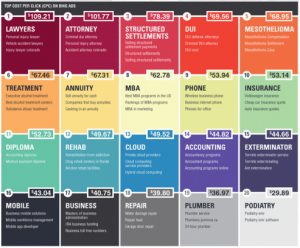
Photo by Kelly Sikkema on Unsplash
For the 2020 tax season, the United States Internal Revenue Service (IRS) has pushed back its typical April 15th filing deadline to May 17th. Last year, the 2019 tax filing deadline was extended to June 15th, a much more drastic delay attributed primarily to the IRS’s closure of all its processing and service facilities for several weeks. Even when it reopened, like other organizations struggling during the pandemic, it resumed operations at limited capacity to help ensure the health and safety of employees and taxpayers.
That reduced capacity only put it further behind in its work. And the IRS has seen its workload grow during the pandemic. It is not only processing income tax returns; it is also involved in distributing funds from multiple rounds of stimulus payments to citizens.
Despite how some might feel about the IRS, it plays a critical role in the federal government. It processes over 140 million individual tax returns annually and is charged with collecting $ 3.5 trillion in taxes, accounting for nearly 95% of federal revenue. A decade-long 20% reduction in its budget has seen its staffing drop by nearly 15%. Despite this, the IRS has found ways to scale its customer service, relying largely on a knowledge base and other online tools to resolve most common questions. For more complex issues, taxpayers should be prepared to wait on hold, however (and that’s only if your call is answered).
On top of these challenges, it’s no secret the technology the IRS uses is woefully out of date. An August 2020 Treasury report put some numbers to it: 231 IT systems used by the IRS are considered “legacy,” because they are at least 25 years old, use obsolete programming languages, or are no longer supported by their vendors.
Now the IRS might see some relief coming. Despite years of reductions, the fiscal 2022 budget would provide $ 13.2 billion to the IRS next year, a $ 1.2 billion or 10.4% increase. Among other improvements, the White House budget proposal suggests this additional funding would “provide new and improved online tools for taxpayers to communicate with the IRS easily and quickly.”
So what do “new and improved online tools for taxpayers to communicate with the IRS easily and quickly” look like? A few suggestions come to mind.
Simplify form identification
Filing tax returns requires using a form–and there are plenty to choose from, all for different situations. Despite the availability of online filing, some 16 million people filed a paper form for tax year 2019. The most typical are featured on the home page with a brief description, along with their corresponding instructions. For less common forms, a search is available.
The problem? Some taxpayers don’t even know where to begin. For even seasoned tax preparers, new scenarios like unemployment experienced during the pandemic might change their filing situation, and even when filing electronically they might have questions. An interview process (such as a chatbot) that assists in primary form selection, along with suggesting additional forms that are needed based on responses would greatly assist those manually completing their tax returns or looking for form-related information.
Double-down on automated tools
It’s an understatement that filing taxes can be complex. Filed electronically or on paper, directions can raise even more questions, requiring citizens to reach out for assistance. And once taxes are filed, people become curious about their return’s status.
The IRS has identified many such common questions. Self-service options for common requests like “Get Your Refund Status” and “Make A Payment” are prominently displayed on the IRS website. With one click, a taxpayer is led to simple forms that request the information required. Upon completing and submitting the form, automation delivers a quick answer or completes the task.
While a great start, the IRS must expand its automated set of self-service tools. As its outdated systems are replaced, this will create many new opportunities to connect systems and processes to improve customer service.
Increase investment in knowledge management
The IRS already has a wealth of information available in its knowledge base. Popular articles are listed and organized by such topics as “Filing Requirement, Form to Use, Due Date,” “Deductions,” and “Credits.” This curation is useful and can assist with most common questions.
However, some current topics were missing. There were no “stimulus” or “COVID-19 relief” topics shown, for example. Further, a search of the knowledge base on either subject only offered a single result for the former term, linking to a “Do I Need to File a Tax Return?” article. Clearly more timely and relevant information was not available, which helps explain the long hold times.
Knowledge management is a powerful way to help not just customers but the agents assisting them. Like any organization, the IRS must keep its self-service topics relevant and updated with current information. Otherwise, that investment erodes over time.
Improving the taxpayer experience
For many Americans, filing taxes can be a complex and frustrating undertaking–pandemic or not. The continuous budget cuts over the last ten years have not made things any easier on citizens or the agency. The IRS has attempted to fill the gap with some self-service options, including some automation and a knowledge base.
The good news is the IRS’s service may be at a turning point. Enacted on July 1st, 2019, the Taxpayer First Act, directs the agency “to re-imagine and enhance the way [the IRS] serves taxpayers … and train IRS employees to deliver a world-class customer experience.” The additional funding proposed by the current White House administration would further support those efforts. Though this might not improve citizens’ feeling about the agency and its purpose, it does offer hope in relieving some of the stress associated with tax preparation and filing.
Business & Finance Articles on Business 2 Community
(40)
Report Post





